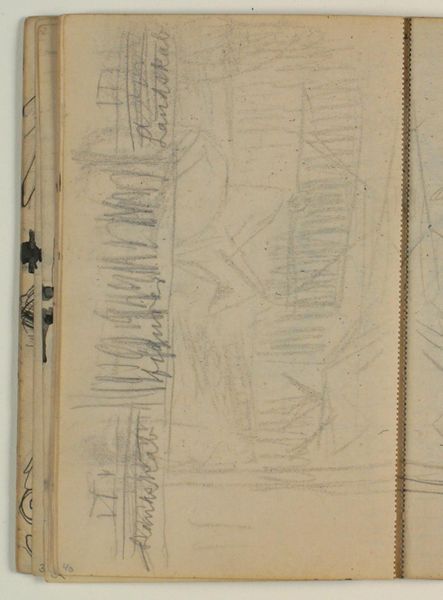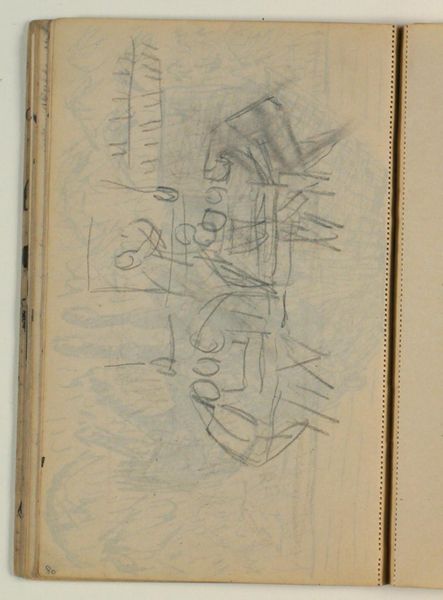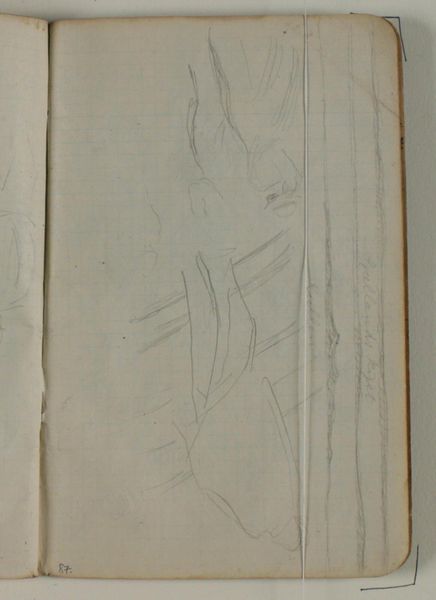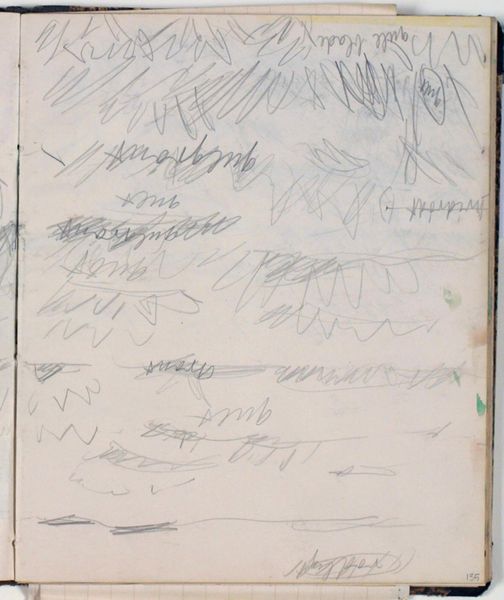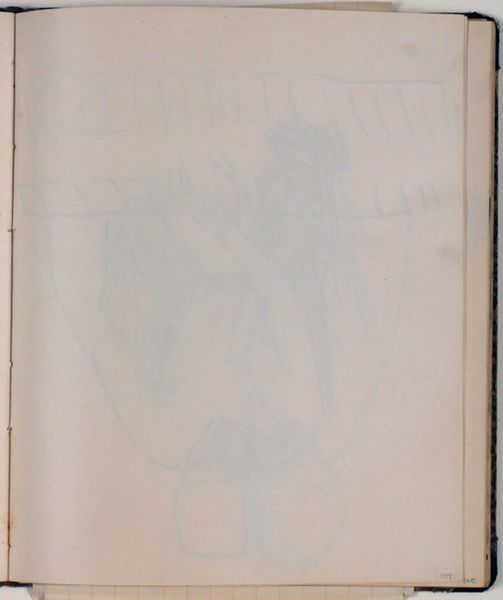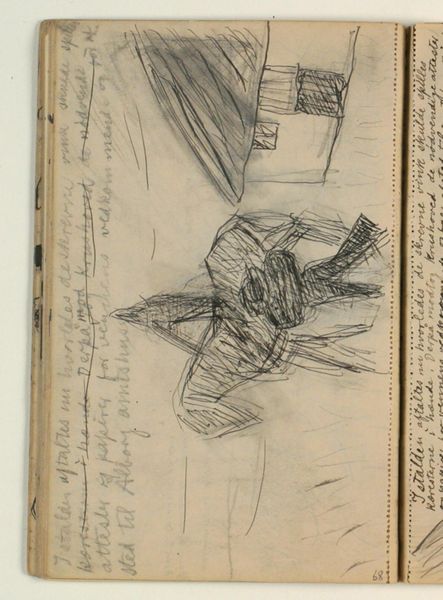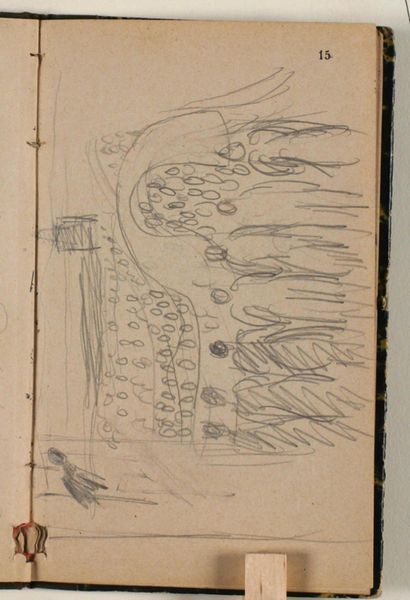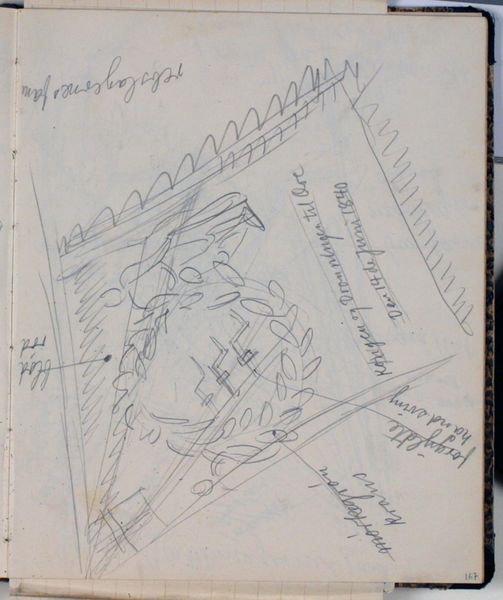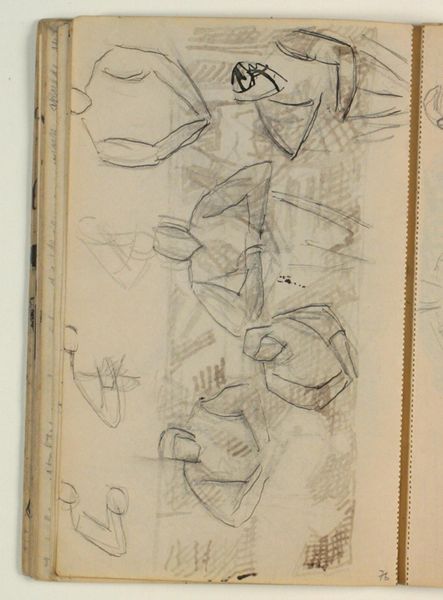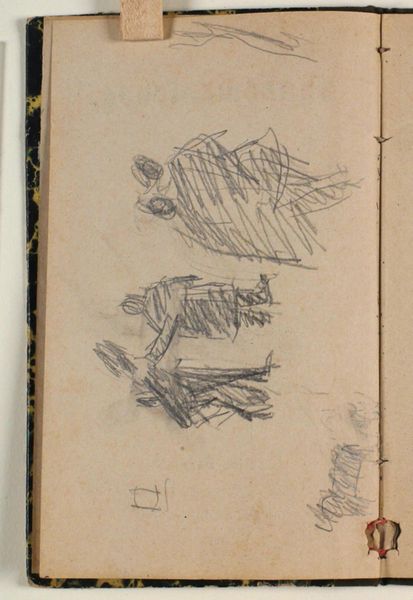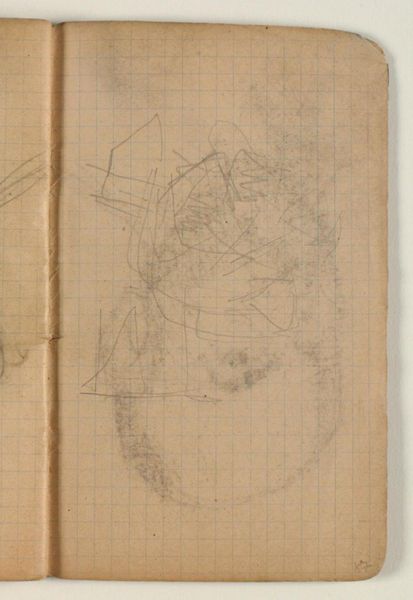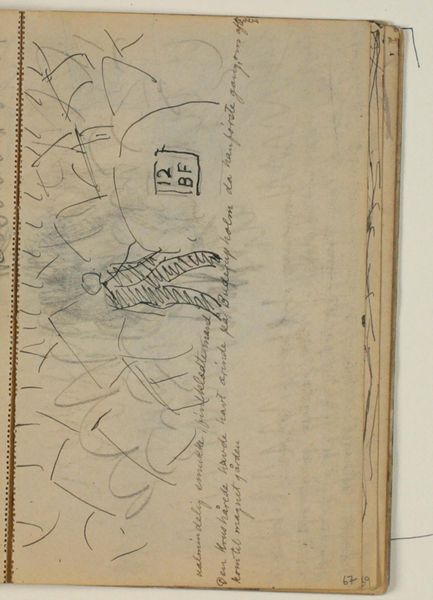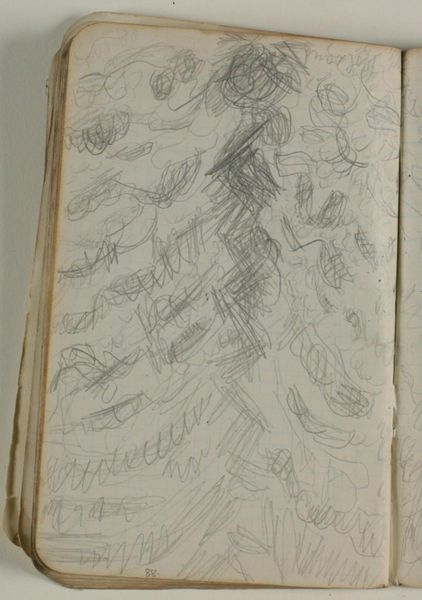
Studie af spækhøkerlaugets fane. Farveangivelser 1930 - 1936
0:00
0:00
drawing, coloured-pencil, paper, pencil
#
drawing
#
coloured-pencil
#
figuration
#
paper
#
coloured pencil
#
pencil
#
line
Dimensions: 226 mm (height) x 185 mm (width) x 112 mm (depth) (monteringsmaal), 221 mm (height) x 184 mm (width) (bladmaal)
Curator: This drawing by Niels Larsen Stevns, titled "Studie af spækhøkerlaugets fane. Farveangivelser," created between 1930 and 1936, presents a fascinating glimpse into the design process for a banner. The media consist of pencil and colored pencil on paper. Editor: It feels quite preliminary, almost like a stream-of-consciousness piece. The rough lines and handwritten color notes create an interesting texture and layered feeling on the page. Curator: Absolutely. This isn't a finished artwork, but rather a study. We see the artist grappling with the composition, the placement of figures, and the colors he intends to use in the final banner for what appears to be a guild, a merchant’s guild perhaps? Editor: The text annotations alongside the drawing suggest he's making active choices about material use. “Slangen rod” translates to 'snake red,' specifying colors as he conceptualizes the piece. The integration of text and image provides a great opportunity to learn how commercial needs are linked to material sourcing. The color choices, as jotted down in pencil, will influence meaning when put together. What can we decipher about the context this piece lives within? Curator: We see suggestions of winged figures, foliage, heraldic elements, a border; all standard visual codes of the time employed in banners to signal power and authority to their organizations. Such guilds or unions have historically fought for respect and safety, and the design must align with the cultural mores of the time. How would those in this community react to particular iconographic approaches? Editor: Precisely, the very act of commissioning an elaborate banner indicates a level of economic stability and the guild's desire for public recognition. Who was Stevns collaborating with on this? Understanding that network would reveal further insights into the dynamics of craft and commerce at that time. Curator: Viewing the banner as a material object of labor, and how the visual language it contains constructs an aspirational identity for its members adds such an intriguing perspective. Editor: Yes, analyzing the artistic choices regarding their production and reception makes this loose sketch feel vital.
Comments
No comments
Be the first to comment and join the conversation on the ultimate creative platform.
